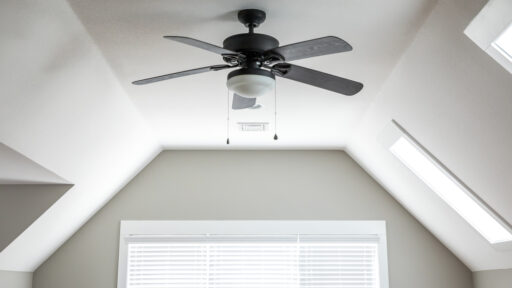When you’re in the middle of a home renovation, it’s easy to get caught up in picking the right paint colors, choosing modern fixtures, or deciding how to arrange the new furniture, but one detail that often gets overlooked is fencing, and that’s a mistake because the fence around your home doesn’t just outline your property, it plays a huge role in making sure your renovation project is safe, your belongings are protected, and your family feels secure.
Installing a proper fence during renovations is about much more than appearance, and while you may think of fencing as something to handle after the dust settles, doing it at the same time as your renovation can make your life easier and help you avoid a lot of unnecessary headaches. A sturdy and well-thought-out fence offers both security and privacy during a period when your home may be more vulnerable due to construction activity, and when workers, contractors, or even curious neighbors might be walking by more often than usual.
In this guide, I’ll walk you through why fencing is so important during a home renovation, how to pick the right type of fence, and the step-by-step process of installing one properly so that it serves your security and safety needs without draining your budget or clashing with the rest of your design.
Why You Need a Fence During Home Renovation
Let’s start with the obvious question: why should you even think about fencing while you’re renovating? After all, you already have plenty of decisions to juggle.
The short answer is that renovations leave your home more open than usual, and without a fence, it can become an easy target for unwanted visitors. Tools, building materials, and personal items may be left outside, and if you don’t have a secure boundary, it’s simple for someone to walk in and take them. Even if theft isn’t a big concern in your neighborhood, having construction workers and delivery people coming and going means you’ll want a way to separate your private spaces from the work areas.
Another reason is safety. Renovations often involve heavy machinery, nails, wood planks, ladders, and even trenches in your yard, which can all become hazards for kids, pets, or even just friends stopping by. A proper fence creates a barrier that keeps curious little ones and animals out of dangerous spots, while also signaling to everyone that they need to be careful.

And finally, let’s not forget privacy. A renovation can make you feel exposed with contractors moving in and out all day, neighbors watching your progress, and your yard looking like a mini construction site. A fence gives you a sense of control and keeps prying eyes away while you work on creating your dream home.
Choosing the Right Type of Fence
Not all fences are created equal, and the best choice for you will depend on your budget, the style of your home, your neighborhood rules (if you live in an area with a homeowners’ association), and of course, your personal preferences. Let’s break down the most common options.
1. Wooden Fences
Wood is a classic option, and for good reason. It looks warm, it’s customizable, and it gives your yard a welcoming feel while still providing solid privacy. You can choose a tall wooden fence for maximum coverage, or a shorter picket-style fence if you’d like something more decorative. The downside is that wood requires maintenance over time to prevent rotting, warping, or termite damage.
2. Vinyl Fences
Vinyl fencing has become increasingly popular because it combines the look of wood with very little maintenance. It’s easy to clean, doesn’t fade as quickly, and won’t rot or attract pests. It’s also durable and can last for years, making it a smart choice if you don’t want to deal with repairs every couple of seasons.
3. Metal Fences
Metal fencing, like wrought iron or aluminum, provides a strong and elegant look. While it may not offer as much privacy as wood or vinyl unless paired with panels, it gives an unmistakable sense of security and can make your home look more sophisticated. If you want safety but don’t mind that people can see through the fence, this is an excellent option.
4. Chain Link Fences
Chain link fences may not win beauty contests, but they’re affordable, functional, and quick to install. They’re great for keeping pets in and unwanted visitors out, though they don’t provide privacy unless you add slats or cover them with plants. Many homeowners use chain link fences as a temporary solution during renovations and then replace them with something more stylish afterward.
5. Composite Fences
Composite fencing blends recycled wood fibers and plastic, giving you the look of wood with less maintenance. It’s eco-friendly, durable, and comes in a variety of designs, though it can be pricier upfront.
Preparing Before You Install
Installing a fence isn’t something you want to rush into. A little preparation goes a long way in saving time, money, and frustration.
First, check with your local municipality or homeowners’ association to see if there are any restrictions or permits required. Some areas have rules about the height of fences, the materials allowed, or how close you can build to the sidewalk or property line. Ignoring these rules can lead to fines or, even worse, having to tear the whole thing down.
Second, talk to your neighbors. If your fence will run along a shared property line, it’s polite—and often legally required—to let them know what you’re planning. Some neighbors may even agree to split the cost if they’ll benefit from the fence too.
Third, call your local utility company before digging. The last thing you want is to hit a buried gas line, water pipe, or electrical cable while trying to put in fence posts. Utility companies usually mark the ground for free so you know exactly where it’s safe to dig.
Finally, plan your layout. Use stakes and string to outline where the fence will go, and double-check your property boundaries with a survey if you’re unsure. It’s a small step that can save you from disputes or accidental encroachment later on.
Tools and Materials You’ll Need
If you’re handy and planning to install the fence yourself, you’ll need a good set of tools and materials. While the exact list depends on the type of fence, here are some common essentials:
- Fence panels or pickets
- Fence posts
- Concrete mix (for setting posts)
- Gravel (for drainage at the bottom of posts)
- Screws or nails
- Power drill or hammer
- Level
- Measuring tape
- Post hole digger or auger
- String line and stakes
- Safety gear like gloves and goggles
If this feels overwhelming, don’t worry. Many homeowners choose to hire professionals instead of doing it themselves, and that’s where contacting a trusted Fencing Company can make all the difference.
Step-by-Step Guide to Installing a Fence
Let’s go through the installation process in simple terms so you know what to expect, whether you’re tackling it on your own or just want to understand what the contractors are doing in your yard.
Step 1: Mark the Fence Line
Using your stakes and string, outline the exact path of your fence. Make sure the corners are square and the line is straight, since even small mistakes here can throw the whole fence off balance.
Step 2: Dig Post Holes
With a post hole digger or auger, dig holes for your fence posts. A general rule is to make the hole about one-third the height of the post, so a 6-foot fence post would need a 2-foot-deep hole. Add a few inches of gravel at the bottom for drainage.
Step 3: Set the Posts
Place each post in the hole, then fill the rest of the hole with concrete to secure it. Use a level to make sure the post is perfectly vertical, then let the concrete cure for at least 24 hours before attaching any panels.
Step 4: Attach Rails or Panels
Once the posts are set, you can attach the horizontal rails or panels. This is where your fence really starts to take shape. Make sure each panel is level and secure before moving on to the next.
Step 5: Add Pickets or Boards
If you’re building a wooden fence, nail or screw the pickets or boards onto the rails, keeping them evenly spaced. This is where you can customize the look, whether you want a solid privacy fence or a decorative design.
Step 6: Install Gates
Don’t forget about access points. Install gates where needed, making sure they’re wide enough for lawn equipment, contractors, or even a future moving truck. Gates should be reinforced with strong hinges and latches to prevent sagging over time.
Step 7: Finishing Touches
Finally, apply any stain, paint, or protective coating to your fence to increase its lifespan. Clean up the area, remove any leftover concrete, and enjoy your new boundary.
Hiring a Fencing Company vs DIY
While many homeowners love a good DIY project, building a fence is more labor-intensive than it looks. Between digging deep post holes, mixing concrete, and making sure everything lines up perfectly, the job can quickly become overwhelming if you’re not experienced.
That’s why many people turn to a professional Fencing Company to handle the installation. A professional crew has the tools, the know-how, and the manpower to get the job done efficiently. They can also help you choose the best materials for your specific needs, handle permits if required, and ensure that your fence is strong, secure, and built to last.
Of course, hiring professionals costs more upfront than doing it yourself, but when you factor in the value of your time, the risk of mistakes, and the peace of mind that comes with a well-installed fence, it’s often worth the investment.
Maintaining Your Fence After Installation
Once your fence is up, you’ll want it to stay looking good and performing well for as long as possible. Here are some simple maintenance tips:
- Inspect regularly: Walk around your fence every few months to check for loose boards, leaning posts, or damaged panels.
- Clean when needed: Use a garden hose or pressure washer to clean dirt, mold, or mildew, especially if you have vinyl or composite fencing.
- Protect wood: Apply sealant or stain every couple of years to keep wood fences from rotting or fading.
- Oil metal parts: If you have a metal fence, oil the hinges and latches occasionally to keep them from rusting.
- Trim plants: Keep bushes, vines, and trees from growing directly on your fence, as they can cause damage over time.
Blending Security with Style
The great thing about fences today is that you don’t have to sacrifice style for function. Modern fencing materials come in countless colors, textures, and designs, so you can choose something that matches your home’s aesthetic while still giving you the protection you need. For example, a sleek horizontal slat fence can make a contemporary home look even sharper, while a traditional white picket fence can give a cozy, inviting feel.
Adding extras like post caps with solar lights, decorative gates, or climbing plants can take your fence from purely functional to a beautiful feature that enhances your outdoor space.
Final Thoughts
Renovating your home is exciting, but it can also be stressful if you don’t take steps to protect your property and maintain safety during the process. Installing a proper fence during renovations isn’t just about marking boundaries—it’s about creating a secure environment for your belongings, your workers, your family, and your peace of mind.
Whether you choose to go the DIY route or bring in a trusted Fencing Company, investing in a strong, well-planned fence is one of the smartest moves you can make during a renovation. It keeps your home safer, your project more organized, and your outdoor space looking polished even in the middle of construction chaos.
So, before you get caught up in the fun parts of design, take the time to think about your fencing needs, and you’ll thank yourself later when you can relax behind a safe and stylish boundary that adds both value and charm to your home.








